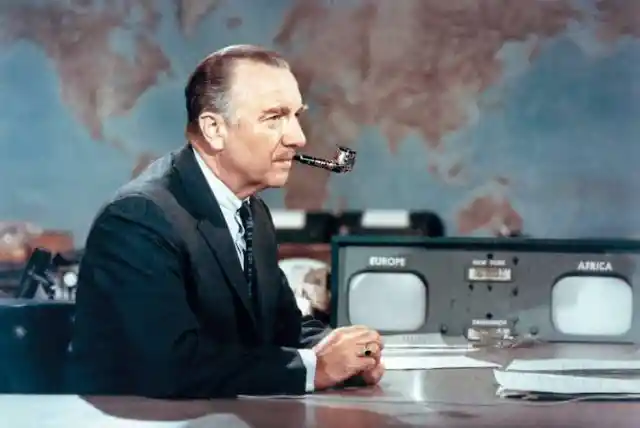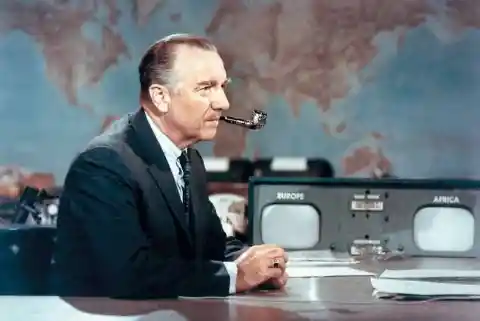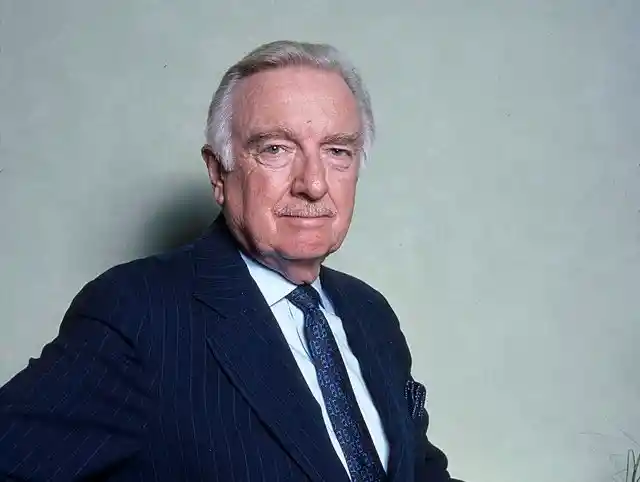Walter Cronkite
Today’s broadcast journalism boasts a plethora of familiar and not-so-familiar names. But there was a time, and many decades, when just one name was synonymous with news, integrity, reliability, and respect.


As one of the first broadcast journalists on American television, Cronkite became a broadcast legend, impartially relaying important information to the masses during a career that spanned nearly two decades, from 1962 to 1981.
His death in 2009 at the age of 92 seemed to bring with it an acknowledgment of the end of an era of journalistic standards that American viewers had once taken for granted. During his broadcast career, he came to be known as “the most trusted man in America,” a fitting descriptor for a journalist committed to presenting the facts in their entirety, and who closed each broadcast with his renowned catchphrase “And that’s the way it is.”
In 1935, Cronkite decided to leave college, opting to work full-time with the Houston Press. He was later fired from his position for refusing to broadcast breaking news that had yet to be confirmed. In 1939, Cronkite was hired as a news editor for United Press International (UPI), where he worked for several years; his assignments included covering World War II in Europe.
New Frontiers
In 1941, the United States entered WW II and UPI promoted Cronkite to overseas war correspondent. His responsibilities included covering the fighting taking place in the North Atlantic, but he was eventually reassigned to London, where he reported on the German bombing raids. As part of his assignments, Cronkite flew in raids over Germany and later reported on the beaches of Normandy, France, on D-Day.
After the end of WW II, Cronkite remained in Europe and covered the Nuremberg war crime trials. In addition, he established numerous UPI bureaus and served as the news agency’s Moscow bureau chief. After returning to the United States, Cronkite became part of the CBS News team in 1950.
A Turning Point
After joining CBS News, Cronkite attracted the attention of network vice president Edward R. Murrow, who decided to hire him as a correspondent for the CBS affiliate in Washington, D.C. Throughout the 1950s, Cronkite narrated the popular program You Are There, which focused on historical events, co-hosted The Morning Show, and co-hosted the documentary series The Twentieth Century. Cronkite quickly became known for his reassuring, factual demeanor as well as his ability to verbally improvise when reporting breaking news.


‘Cronkite’ Becomes A Household Name
In 1962, CBS News offered Cronkite the position of anchorman and editor of the evening news. His presence on the nightly news made him a fixture in American homes, and his broadcast became one of the most-watched TV news shows of that era. Owing to his calm demeanor, knowledgeable news presentation, and ability to clearly explain complex events, he soon became regarded as “America’s most trusted man,” according to a 1972 independent opinion poll.
Cronkite’s 15-minute news broadcast was eventually expanded to 30 minutes, making it the first half-hour nightly news show in America. He served as anchorman for the CBS Evening News for 19 years, and throughout his tenure, Cronkite covered many of the most important and defining news events of the 20th century. The news stories he presented to his audience ran the gamut, ranging from the sorrowful to the stupendous, and included the assassinations of President John F. Kennedy and Martin Luther King, Jr., the Vietnam War, the Apollo 11 moon landing, the civil rights struggles of the 1960s, Watergate, the Iran hostage crisis, and a pivotal interview with Anwar Sadat and Menachem Begin.